The kitchen blender, a steadfast ally in our culinary quests, has a hidden facet that occasionally comes to light, and not in the most pleasant way. The issue at hand is a blender leaking an unsettling black liquid, a concern that has baffled many. In this discussion, I will address the straightforward yet vexing problem: what causes blenders to leak black liquid? I’ll provide a clear outline of possible culprits, practical troubleshooting steps, and effective prevention measures. This guide equips you with the essential insights to comprehend and tackle this issue head-on, ensuring your kitchen exploits remain as smooth as your favorite blended creations – without any unwelcome surprises.
Quick Short Answer: Why is there black stuff coming out of my blender?
- Rotten food debris: Old food left to rot can lead to unpleasant black liquid leaking if not cleaned properly.
- Leaky lubricant: Worn-down rubber seals or misplacement can result in black liquid leakage, potentially due to blender lubricant.
- Worn-out gasket: A deteriorated gasket, especially located between the blades, can be a cause of black liquid leaks.
- Aging parts: With age, blender internals like the shaft and bearing can trap food debris, causing black liquid leakage.
Now It’s time to Unveil the secrets behind this culinary enigma to keep your kitchen creations smooth and worry-free.
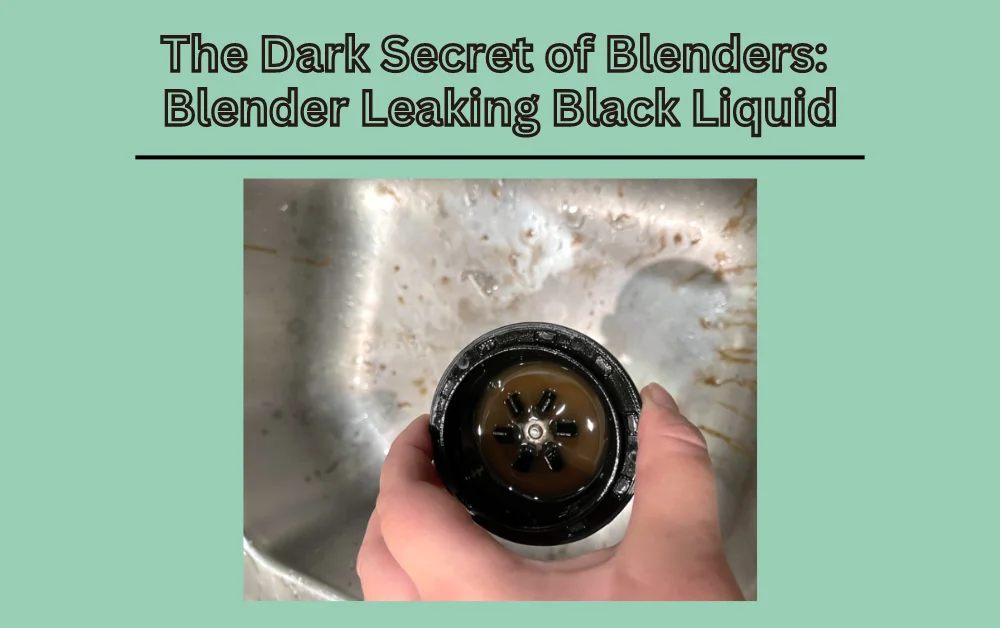
Possible Causes: Blender Leaking Black Liquid
Well, let’s take a closer look at what might be causing this curious problem. Don’t worry, I’ll explain it in simple terms!
Rotten Food Debris
Imagine if you made a delicious smoothie and didn’t clean your blender afterward. Leftover bits of food can get stuck inside. Over time, these bits can turn into a dark, yucky liquid. So, if you’re not cleaning your blender well, this might be the reason behind the black liquid leaking out.
Leaky Lubricant
Just like how a bicycle chain needs oil to move smoothly, blenders have parts that need special oil too. This oil helps all the parts inside the blender work together without any trouble. But sometimes, the rubber parts that keep the oil inside can get old or move from their place. When this happens, the oil can leak out, and it might look like black liquid.
Worn-out Gasket
Think of a gasket as a special rubber ring that helps keep the blender parts tightly sealed. If this rubber ring gets old or damaged, it might not do its job properly. This can let the black liquid escape from the blender while you’re blending stuff. Checking the gasket and changing it if needed can stop this from happening.
Aging Parts
Just like how your favorite toy can get worn out after lots of play, blenders can also get old and tired. Inside the blender, there are parts that help it work smoothly. But after a while, these parts can get clogged with bits of food and other stuff from blending. This mixture can mix with oils or other liquids, and that’s why you might see black liquid leaking. Even though blenders get older, taking care of them by cleaning and checking can prevent these leaks.
Understanding these reasons can help you solve the mystery of your blender leaking black liquid. Remember, keeping your blender clean, checking its parts, and doing a bit of maintenance can make sure your blender stays in great shape and your kitchen stays mess-free!
Recommended Reading: The Smokin’ Secret: Why Your Blender Smells Like Burning?
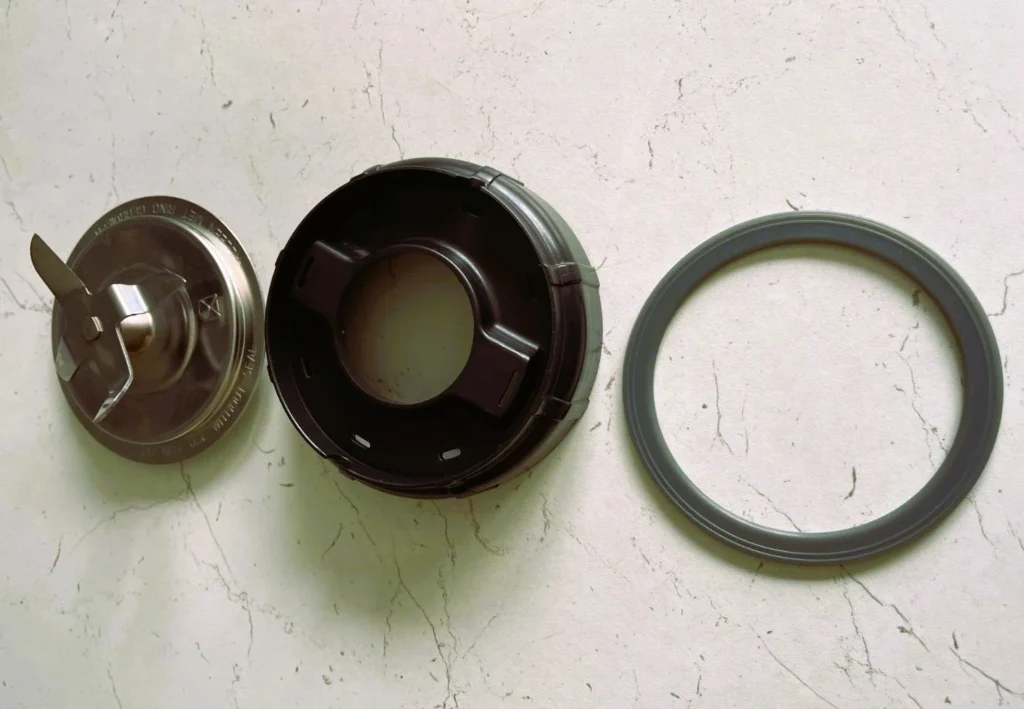
3 Troubleshooting Steps for Blender Leaking Black Liquid:
#1. Check and Replace the Gasket Seal:
The gasket seal, often a rubber ring, forms a tight seal between the blade assembly and the blender pitcher. If it’s worn out, cracked, or improperly placed, it can lead to leaks. To fix this:
- Carefully remove the blade assembly.
- Inspect the gasket for any signs of damage or wear.
- If damaged, replace it with a new gasket seal from the manufacturer.
- Ensure the new gasket is properly aligned before reassembling the blade assembly.
#2. Inspect the Blender Pitcher for Cracks:
Cracks or damages in the blender pitcher can also cause leaks. Here’s what to do:
- Thoroughly examine the pitcher for any cracks, especially near the bottom.
- Fill the pitcher with water and watch for any signs of leakage.
- If you find cracks, consider replacing the pitcher to prevent further leaks.
#3. Clean the Blade Assembly Thoroughly:
Food particles, debris, and built-up residue can interfere with the blender’s seal and cause leaks. Here’s how to clean the blade assembly:
- Carefully remove the blade assembly from the pitcher.
- Rinse it under running water to remove loose debris.
- Soak the assembly in warm, soapy water for a few minutes.
- Use a brush or toothbrush to gently scrub the nooks and crannies of the assembly.
- Rinse thoroughly and allow it to air dry before reassembling.
Remember, safety comes first. Always unplug the blender before performing any troubleshooting steps. If the issue persists after trying these steps, it might be best to contact the manufacturer or seek professional assistance to avoid any potential hazards.
Recommended Reading: Unlock The Secrets: How To Sharpen Blender Blades?
3 Prevention Tips for Blender Leaking Black Liquid
After understanding the troubleshooting steps to address the issue of a blender leaking black liquid, it’s equally important to know how to prevent this problem from occurring in the first place. Here are some preventive measures to ensure the longevity and safety of your blender:
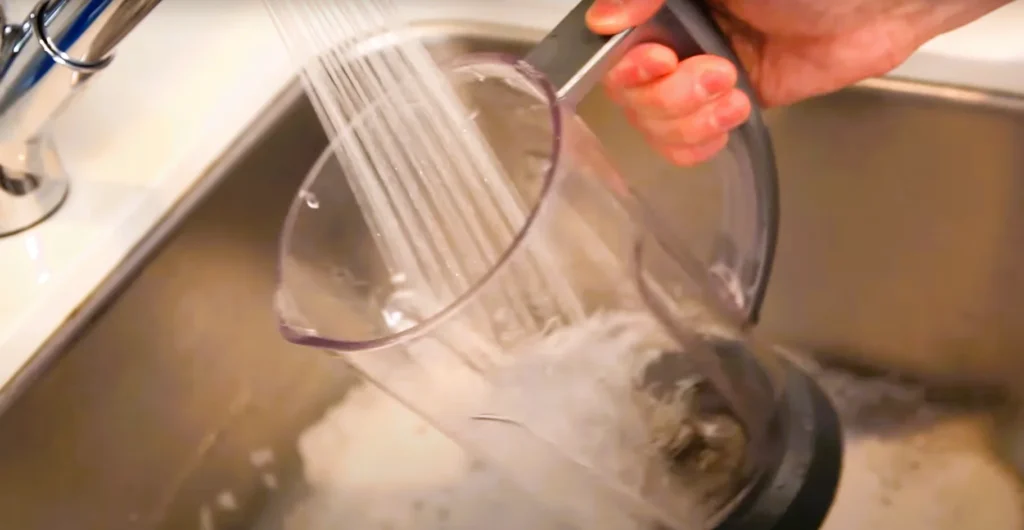
#1. Regularly Clean and Maintain Your Blender
Dirt, food residues, and prolonged exposure to moisture can damage the blender’s seal and cause it to leak black liquid over time. To avoid this, it’s essential to clean your blender after every use. Ensure you disassemble its parts (as per the manufacturer’s guidelines) and clean them thoroughly. This not only prevents leakages but also ensures the hygiene of the food you prepare.
#2. Avoid Blending Hot Liquids or Hard Foods
Blending hot liquids or very hard foods can exert undue pressure on the blender’s blades and the seal. Over time, this could weaken the seal and result in leakages. It’s always a good idea to let liquids cool down a bit before blending and to chop hard foods into smaller pieces to reduce the stress on your blender.
#3. Replace Worn-Out Parts Promptly to Prevent Leaks
Like any other appliance, the components of a blender can wear out over time, especially with regular use. If you notice any part, especially the seal or blades, looking worn or damaged, it’s crucial to replace them immediately. Using the blender with worn-out parts not only risks leaking but also reduces its efficiency and safety. Always refer to the manufacturer’s guidelines when sourcing replacement parts.
By following these preventive measures, you can greatly reduce the risk of your blender leaking black liquid and ensure a longer lifespan for your appliance.
When to Seek Professional Help?
After discussing some prevention tips to ensure your blender doesn’t end up leaking black liquid, it’s essential to understand when it’s time to move beyond prevention and seek expert assistance. Just like any other appliance in your home, blenders aren’t immune to wear and tear, no matter how well you maintain them. Sometimes, issues can arise that are beyond our expertise, and it becomes crucial to recognize these moments to ensure safety and continued efficient functioning. Below, we explore a few signs indicating that it’s time to consult a professional or consider a replacement.
Persistent Leaks Despite Troubleshooting Attempts
While the prevention tips provided can go a long way in ensuring your blender stays in top shape, sometimes, leaks may persist. If you’ve tried all troubleshooting methods — from checking the gasket to ensuring the jug and base are properly aligned — and your blender continues to leak the black liquid, it’s a clear sign that there’s a deeper underlying issue. Professionals have the expertise to dissect these problems and identify if it’s a manufacturing defect or another hidden concern.
Unusual Noises or Smells Coming From the Blender
A blender in perfect working condition should operate relatively quietly and emit no strange odors. However, if you start noticing unusual noises, such as grinding or screeching sounds, or if there’s a peculiar smell emanating from your blender each time you use it, it’s a significant red flag. These could be signs of motor malfunction or internal parts wearing out. Continuing to use the blender in such a state can cause further damage and may even be hazardous.
Recommended Reading: Secrets To Silence: 9 Proven Ways To Reduce Blender Noise
Safety Concerns Arise Due to Leakage Issues
Safety should always be our top priority. If the black liquid leaking from the blender is causing electrical issues or you notice sparks, it’s time to unplug the appliance immediately. Water or any liquid coming in contact with the electric components can be a dangerous combination. Similarly, if the leaky liquid is slippery or tends to spill over to the floor or counter, it poses a risk of slips and falls. In these cases, it’s best to consult a professional about the blender’s status and if it’s safe to continue using it.
While prevention is better than cure, there are times when even the best maintenance practices might not prevent issues. Recognizing when to call in the experts is essential to ensure your safety and the longevity of your blender.
FAQ on Blender Leaking Black Liquid
What should I do if my blender starts smoking while in use?
If you notice smoke or burning smells coming from your blender, immediately turn it off and unplug it from the power source. Smoking can be a sign of a serious problem with the motor or internal components. Do not use the blender until it has been inspected and repaired by a professional.
How do I stop my blender from leaking?
To prevent leaks, please ensure the blender’s gasket is in good condition and properly seated. Check the alignment of the blender jug and base, making sure they are correctly fitted. Avoid overfilling the blender, as excessive pressure can cause leaks. Tighten the blender jar’s lid securely before blending. Please read my complete guide to why is my blender leaking for more help. If you have followed these steps and the blender continues to leak, please consult a professional or the manufacturer for more help.
Why does the Magic Bullet leak?
The Magic Bullet, like any other blender, can experience leaks if its gasket is worn out or not positioned correctly. Additionally, blending ingredients beyond the recommended capacity or using hot liquids can create excessive pressure, leading to leaks. Ensure you follow the manufacturer’s guidelines for proper usage, including not blending hot liquids, and regularly inspect and replace the gasket if needed. Read my full guide of fixing magic bullet leaking black liquid here!
What do you do if your blender gets wet inside?
If your blender accidentally gets wet inside, immediately unplug it from the power source and disassemble the parts that got wet. Thoroughly dry all components before reassembling the blender. Avoid using the blender until you are certain that all parts are completely dry to prevent potential electrical hazards.
How should a blender be cleaned?
Proper cleaning is crucial for maintaining the performance and longevity of your blender. Before cleaning, ensure the blender is unplugged and disassembled. Depending on the model, some parts may be dishwasher safe, but it’s generally recommended to hand wash blender components with warm, soapy water. Use a soft brush or sponge to clean the blades and interior thoroughly. Avoid submerging the blender’s motor base in water; instead, wipe it with a damp cloth. Allow all parts to dry completely before reassembling the blender.
Remember, following proper maintenance and cleaning practices can extend the life of your blender and keep it functioning at its best. If you encounter persistent issues or safety concerns, it’s always best to seek assistance from professionals or the blender’s manufacturer.
Final Words
Blenders are great kitchen tools that help us mix and blend ingredients quickly. But sometimes, they might leak black liquid, which can be a problem. To avoid this, follow the tips we gave you earlier, like checking the gasket and aligning the blender parts properly.
If you’ve tried these tips and the leaks persist, or if you notice strange noises, bad smells, or safety concerns, it’s time to get help from experts. Safety is crucial, and using a faulty blender can be dangerous.
Regularly maintain and clean your blender to keep it in good shape. Remember not to overfill it or blend hot liquids unless the blender is designed for that.
Taking care of your blender will make it last longer and serve you well in the kitchen. If you ever have questions or problems with your blender, don’t hesitate to ask for help from professionals or the manufacturer. Happy blending!


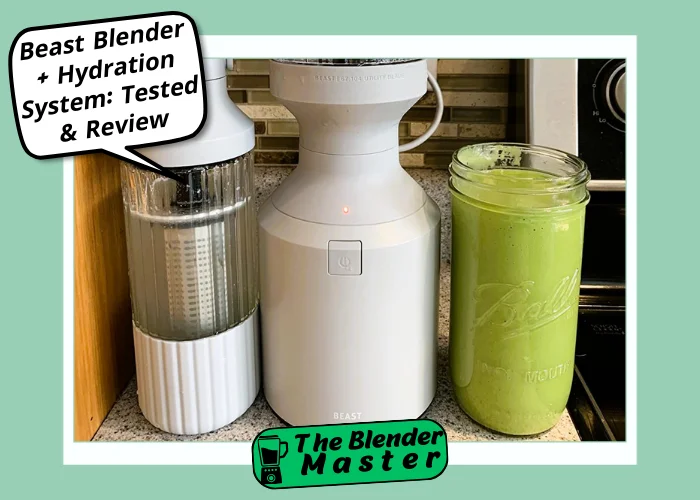
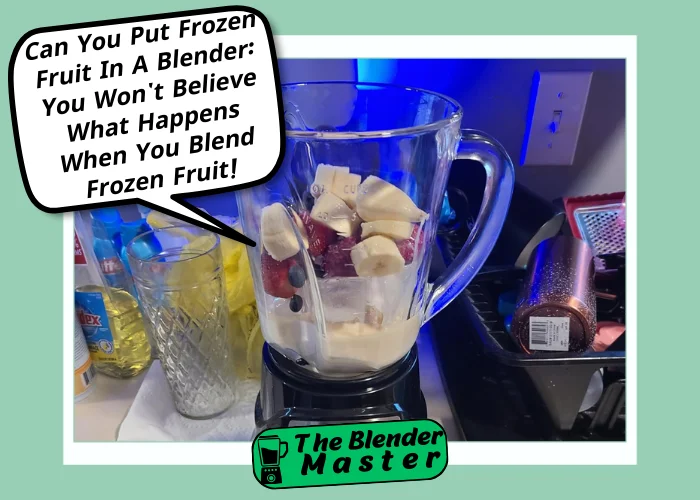
Leave a Reply